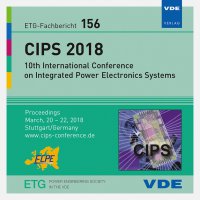Reliability Design of Dual Sided Cooled Power Semiconductor Module for Hybrid and Electric Vehicles
Konferenz: CIPS 2018 - 10th International Conference on Integrated Power Electronics Systems
20.03.2018 - 22.03.2018 in Stuttgart, Deutschland
Tagungsband: CIPS 2018
Seiten: 4Sprache: EnglischTyp: PDF
Persönliche VDE-Mitglieder erhalten auf diesen Artikel 10% Rabatt
Autoren:
Wang, Yangang; Li, Yun; Li, Helong; Dai, Xiaoping; Wu, Yibo; Liu, Guoyou (State Key Laboratory of Advanced Power Semiconductor Devices, Zhuzhou, Hunan, P. R. China)
Liu, Xuyu (School of Electrical and Electronic Engineering, The University of Manchester, Manchester, United Kingdom)
Inhalt:
Power semiconductor market is expecting a substantial growth with global high interests and efforts to develop and popularize low carbon vehicles. The power electronics components and systems play key roles in hybrid and electric driving, controlling and assisting, and one of the most important devices is the power semiconductor module in the powertrain system. For high performance and safety requirements of hybrid and electric vehicles (HEV/EV), as well as for harsh operating environment, the performance and reliability of automotive module must be at exceptional high standard. In this work, a new automotive power module with dual sided cooled (DSC) capability is developed. The reliability design is focused in terms of thermal, electrical and process reliability. The module has been designed with optimization of performance, reliability, weight and cost, and is being qualified for automotive standard. By incorporating a planar DSC structure and capability, the junction to case thermal resistance (Rth J-C) is reduced by about 50% compared to the advanced direct liquid cooling (DLC) automotive module, which enhances the thermal reliability. The planar packaging without emitter bonding wires in the proposed DSC module improves thermal and electrical performance and reliability, such as reduction of parasitic resistance and inductance, improvement of temperature uniformity, increase of efficiency and short circuit capability. The weight and cost can be saved by about 30% by eliminating baseplate. By introducing the advanced die and terminal attach technologies in assembly process, the reliability are reinforced further. The module is assembled with medium volume by the proposed design and process, and is being evaluated in the power control unit of HEV/EV.


